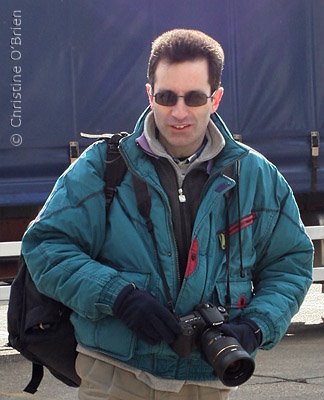Out, damned spot! - sensor dust (part 3) - a post script

Well, not long after posting the second part of my piece on removing dust from DSLR sensors and a copy of "The Photographer" (the British Institute of Professional Photography magazine) lands on my doormat, proclaiming on it's front cover "On test: Dust-Aid sensor cleaner". This is a product with which I was unfamiliar, and I read the review by Steve Hynes with great interest. To describe the product briefly you get a plastic applicator which has stuck to it a foam pad. The foam pad has high strength adhesive on one side ( to stick to the applicator) and low strength adhesive on the other. You push the low-tack side of the pad on to the sensor (as we know, this is actually not the sensor but a sheet of glass in front of the sensor) and you hope that any dust sticks to the pad. The pads are removable and you get 12 pads with the applicator (for about £37).
A couple of points about the review. I have a high regard for Steve Hynes' reviews. Before becoming the editor of "The Photographer" he had two spells as editor of "Professional Photography" magazine, and on both occasions I think that magazine was better for his influence. He has also written many articles that I have found very informative.
You sense a "but" coming, don't you. Well, two actually. The first is that he states that "There are no signs of residual adhesive being left on the sensor", but from the review it seems that he only had one session of cleaning. I would be more impressed if he said that he had been using it every couple of weeks for six months and no residue was present - and detailing how this was verified.
The second reservation regards a bit of advice that he gives about sensor cleaning in general. He states quite rightly that several cameras can only be set to "sensor cleaning mode" if connected to a mains adaptor, and that mains adaptors cost "a stupid amount of money" (also true up to a point). His solution is to set the camera to the B (bulb) setting and lock the shutter open. My understanding was that cleaning the camera with the sensor powered up would be unwise as there would be a static charge present in the sensor and this would attract dust (generally unhelpful when trying to remove it). Prior to posting this piece I contacted Steve, and he said that he had used the bulb setting many times without problem and that there was not a significant static charge present. His point being that there is not a high enough voltage used to cause significant static. If he is right (well I'm not arguing with him) it means that the advice about always turning the camera off when changing lenses may also be unnecessary. All I can say at this stage is that I will still change lenses and clean the sensor with the power off, but I will try to find out more information and post it as soon as possible. As they say "you live and learn".
Image: Man o'War Beach, Dorset. April 2007



